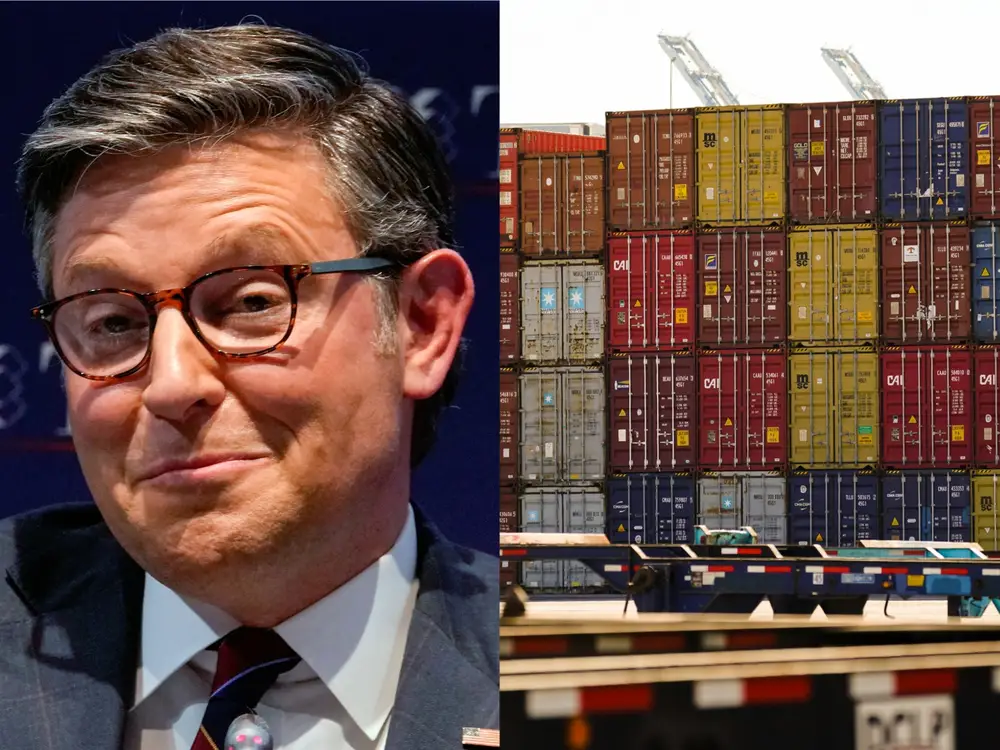The US economy could get hit by a double whammy on September 30 if 2 major negotiations aren’t hammered out

The US faces a September 30 deadline to avoid a government shutdown. The East Coast and Gulf Coast ports also face a possible strike.
September 30 could be a consequential day for the US economy if two major negotiations don’t get hammered out in time.
Congress must pass a stopgap spending bill by the last day of this month to avoid a partial government shutdown. September 30 is also the deadline for the International Longshoremen’s Association and several East Coast and Gulf Coast ports to agree on a contract.
If a government shutdown happens and a strike is not averted, substantial chunks of the US economy could be affected a little more than a month before the 2024 presidential election.
Of course, there’s still time for members of Congress to negotiate a stopgap spending bill. The House of Representatives on Wednesday rejected a bill brought to the floor by Speaker Mike Johnson that would’ve funded the government for another six months. On Thursday, Johnson and other Republican leaders signaled they were interested in keeping the government open.
There’s also time for the ILA to hash out a contract with the US Maritime Alliance — though there have been no negotiations thus far, The Wall Street Journal reported Wednesday.
The two potential crises are unrelated beyond sharing an ominous deadline. Here’s what’s happening with each.
A government shutdown
The rejection of Johnson’s plan on Wednesday ratcheted up tensions in Congress as the September 30 deadline draws closer.
The 220-202 vote saw 14 Republicans join Democrats to block the bill, which is opposed by both the White House and Democrats in the Senate.
While the bill had been expected to fail for days, former President Donald Trump likely didn’t help Johnson’s cause by pushing Republicans to include the entirety of a voting-registration bill that requires proof of citizenship to vote in national elections or move forward with a shutdown.
As Johnson is now forced to work across the aisle, Democrats will likely propose a three-month continuing resolution, The Washington Post reported. The Journal reported on Thursday that GOP leaders were in discussions over a bill that would keep the government open through mid-December.
The fallout of a prepresidential-election government shutdown would be bad for both parties, but Senate Minority Leader Mitch McConnell told reporters on Wednesday that he thinks Republicans would bear the brunt of the blame.
Should Congress fail to pass a bill by September 30, the government would be partially shut down on October 1, meaning federal agencies that were not funded would discontinue all nonessential work until new funding legislation is passed and signed into law.
During a shutdown, nonessential government workers are furloughed; social-services programs such as Social Security, Medicare, and veterans benefits may experience disruptions; and national parks could close to the public.
The 2018-19 shutdown that lasted 35 days reduced the GDP by $11 billion, the Congressional Budget Office estimated.
The previous three shutdowns, which occurred in 2013, 2018, and again from 2018-19, cost taxpayers nearly $4 billion, according to the Senate Appropriations Committee.
A shutdown of the docks
Meanwhile, it becomes more likely by the day that 45,000 dockworkers at ports from Maine to Texas will go on strike.
The dockworkers’ contract expires at the end of this month, and the ILA has said its members will strike if a deal is not met.
The union is asking for a 77% wage increase over six years, the Journal reported.
The looming economic threat has prompted US importers to get a jump start on holiday shipping, with millions of dollars worth of items being rushed to try to avoid the possible walkout, the Journal reported.
A strike would likely lead to mass cargo diversions to West Coast ports, which could clog up gateways, per the Journal.
Should these high-traffic ports cease operations ahead of the peak holiday season, the economic consequences for retailers and consumers could be dire.
A walkout could result in mass delays, increased shipping costs, and potential shortages, all of which could affect the broader economy, the Retail Industry Leaders Association said.
Some analysts have predicted that every day of a strike could require five days to deal with the backlog.
The government could step in to help the two sides reach a deal, though the ILA said they don’t want government intervention. The RILA said President Joe Biden could also “request a court order for an 80-day cooling-off period under the Taft-Hartley Act,” which would pause the strike while negotiations continued.






